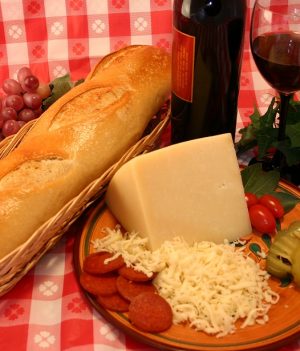Blog
5 of the Healthiest Cheeses You Never Knew About… or Did You?

Cheese gets a might bad rap for clogging arteries and packing on the pounds. But just because you shouldn’t eat an entire platter of Paula Deen’s cheese balls doesn’t mean you have to avoid cheese altogether.
Cheese can be both delicious and a great source of lean protein, calcium, phosphorus, and other health benefits — if you choose the right varieties. Here are five cheeses that belong on any shopping list.
1. Feta
A key component of Greek cuisine, feta is lower in fat and calories than most cheeses, says Natalie Caine-Bish, an associate professor of nutrition and dietetics at Kent State University. A one-ounce serving — enough to make a Greek salad lover happy — has 4 grams of protein and only 74 calories.
Caine-Bish says feta’s characteristic strong flavor means you can get away with using less cheese without feeling cheated. Feta’s salty flavor makes it a good choice to crumble on salads and soups. It also pairs well with sweeter produce, like watermelon or sweet potatoes.
Tip: Although domestic feta is often made with cow’s milk, Greek feta is made from sheep or goat’s milk, which makes it a good choice for someone with problems digesting bovine dairy products. Keep in mind, though, that unpasteurized feta and other soft cheeses have a higher risk of containing the Listeria bacteria than other cheeses — so be sure to buy pasteurized feta if you’ll be serving it to a pregnant woman or someone with a compromised immune system.
2. String cheese
Seriously. String cheese, that favorite kid snack, is a great choice for adults too.
For starters, if you choose string cheese made of part-skim mozzarella, it’s low in calories and high in protein (a one-ounce serving has 71 calories and 7 grams of protein).
What’s more, string cheese isn’t actually a processed cheese — mozzarella naturally behaves in that stringy way, so it counts as a whole food. (Just make sure to buy string cheese that’s 100 percent mozzarella.)
Tip: String cheese is “quick and easy — grab and go, and already portioned out for you,” says Silvia Veri, the nutrition supervisor at Beaumont Health System’s Weight Control Center in Royal Oak, Michigan. The fact that it’s prepackaged makes it handy for healthy snacks at work, between errands, or at home.
3. Parmesan
Like feta, Parmesan is a great choice because just a little packs a potent, nutty punch.
Parmigiano-Reggiano comes from the Parma area of Italy, and its strong flavor has inspired a lot of buzz throughout history: Samuel Pepys famously buried his Parmesan cheese to keep it safe during the Great Fire of London, and Boccacio, in The Decameron, imagines a mountain of Parmesan inhabited by macaroni and ravioli makers.
Parmesan is relatively low in calories (110 in a one-ounce serving), but it’s high in sodium (449 milligrams for the same serving size), so be sure to use it in moderation.
Tip: Try shaving pieces onto a salad or eating small slices with ripe apples or pears, in addition to grating it over pasta and pizza.
4. Swiss
Swiss is another strong cheese that’s good for you. What we call Swiss cheese is often Swiss Emmentaler (or Emmental), though other cheeses with a similar taste and hole-studded texture are sometimes lumped in as well.
Swiss is a popular cheese, and Caine-Bish likes it specifically for that reason. Since it comes in a number of varieties, including low-sodium or low-fat, it’s easy to find a version that fits your dietary needs.
As a hard cheese, Swiss is also richer in phosphorus than nearly all soft cheeses. According to Caine-Bish, “Calcium and phosphorus are key to bone formation and to maintaining bone density” — important for women of any age.
Tip: Try adding a slice to your sandwich or grating a few ounces into scrambled or baked eggs. Small slices or cubes make a great snack, especially with fruit instead of crackers.
5. Cottage cheese
There’s a reason dieters love cottage cheese: It’s high in protein, low in fat (if you buy a low-fat variety), and versatile enough to add to most any meal or snack.
“You can eat it with almost anything,” says Veri. “You can eat it with veggies and make it savory, or add fruit and cinnamon and make it sweet.”
A one-ounce serving of low-fat cottage cheese has 3 grams of protein and only 20 calories. Like all cheeses, it’s also high in calcium.
Indian paneer, Mexican queso fresco, and other types of farmer’s cheese are simply pressed versions of cottage cheese. If you are the DIY-type, this cheese and its firmer derivatives are some of the easiest cheeses to make at home.
Tip: Cottage cheese can have a lot of sodium, especially when it’s low-fat or nonfat. Be sure to check the nutrition label on the container before buying it. Some companies, such as Lucerne and Friendship Dairy, make no-salt-added versions.




